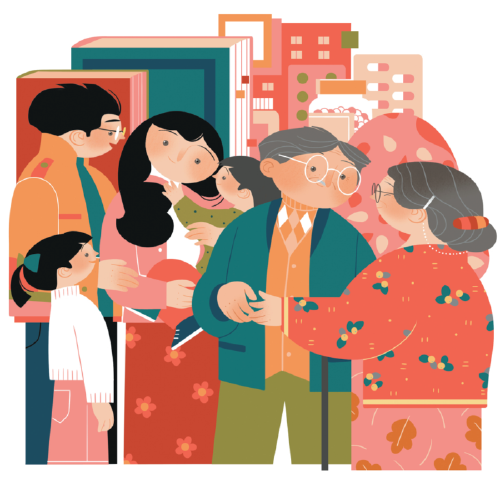Working it out


China needs to carry out reforms to address the problem of its shrinking working age population
There is a consensus among economists and demographers that in the medium-to long-term, China's aging population and demographic decline will be one of the country's biggest problems.
The latest decennial nationwide census of 2020, released in May 2021, shows that China's population has slightly grown, but the number of new births in 2020 declined for the fourth consecutive year. China's National Bureau of Statistics reported that just 12 million babies were born in 2020, down from 14.65 million in 2019, marking an 18 percent year-on-year decline and continuing the fall to a nearly 60-year low. The birthrate in China in 2020 was just 1.3 children per woman, well below the replacement level of 2.1 and approaching the birthrate in Japan.
According to NBS statistics, China's working-age population, those aged 16 to 59, fell by 40 million from 2010 to 2020, and it accounted for 62.3 percent of the total population. "As aging intensifies, there will be more than 40 million new retirees over the next five years and the number of Chinese workers will see a net fall of 35 million," the Ministry of Human Resources and Social Security forecast in a five-year plan posted in June 2021. Economists have calculated that around 2013, China entered the so-called Lewis Turning Point, which is when workers' wages begin to rise faster than inflation as the surplus of labor is exhausted.
According to the Chinese Academy of Sciences, due to the population aging and the shrinking of its working-age population, if things are as they are now, the State pension fund of China will run out of money by 2035. But as the census data shows, if the retirement age were raised to 65, the country would have 73.4 million more people working.
The current Chinese pension law regulates that men retire at 60, white-collar women at 55, and blue-collar women at 50. Thus China has one of the youngest retirement ages worldwide. The retirement age in China has been in effect since 1951, when the average life expectancy in the country was not 77 years, as it is now, but less than 50 years. In those times, there was a need to quickly create jobs for unemployed youth, as most industries required physical labor. However, it is clear that the retirement age in China should be reviewed. Retirement at 65 has become the norm in many other countries.
The Chinese government has recently announced that under a new five-year plan through 2025, it may be possible to retire later voluntarily. In March, Jiangsu province became the first province in China to offer workers to delay retirement. The region has opted for a voluntary system that requires the consent of individual workers and their employers. Based on Jiangsu's experiences, it is expected that other provinces will start offering people the option to retire later as well.
An improved pension system is not the only thing China needs to keep its working population growing, the country needs to raise the birthrate. At the end of March 2021, the Chinese government announced that it would allow married couples to have up to three children, which is the next step after 2015 when the family-planning policy was abandoned. China's birthrate has already fallen to the level of Japan, even though its GDP per capita is more than three times lower. It shows that the fall in the birthrate may continue. The most unfavorable example maybe the Republic of Korea where the birthrate is 0.84.
For societies which restrict immigration, there is a direct correlation between the population's standard of living and the birthrate, as the wealthier the population, the lower the birthrate. Generally, families living in cities and receiving an above-average income prefer self-development to the detriment of a high birthrate. Even the country's large-scale urbanization, when there was a massive migration of the rural population to large cities, could not stop this process.
The government has promised to improve prenatal and postnatal services and make fertility treatments more accessible for couples. However, other well-known measures to encourage the birthrate, which are well established in other countries, should be taken, such as providing monetary incentives, housing subsidies, free child care, free education and free medical care for children.
The economic growth of any country depends on the number of workers it has, their productivity and the amount of capital they use in their work. Therefore, China needs to carry out several necessary reforms to raise the retirement age and increase the birthrate. Additionally, it will be essential to achieve greater urbanization, constantly increase spending on science, education and healthcare, and, most importantly, take radical measures to increase labor productivity. Only a few countries have coped with the development of an unfavorable demographic situation. It will not be easy for China. But as practice has shown, China faces up to challenges, and as a rule, does so successfully. Hopefully, the country will be able to solve the problem of unfavorable demographics as well.
The author is a former prime minister of Kyrgyzstan and a visiting senior fellow at the Institute for Global Cooperation and Understanding at Peking University. He is the author of the forthcoming book Central Asia's Economic Rebirth in the Shadow of the New Great Game. The author contributed this article to China Watch, a think tank powered by China Daily. The views do not necessarily reflect those of China Daily.
Contact the editor at [email protected].

































